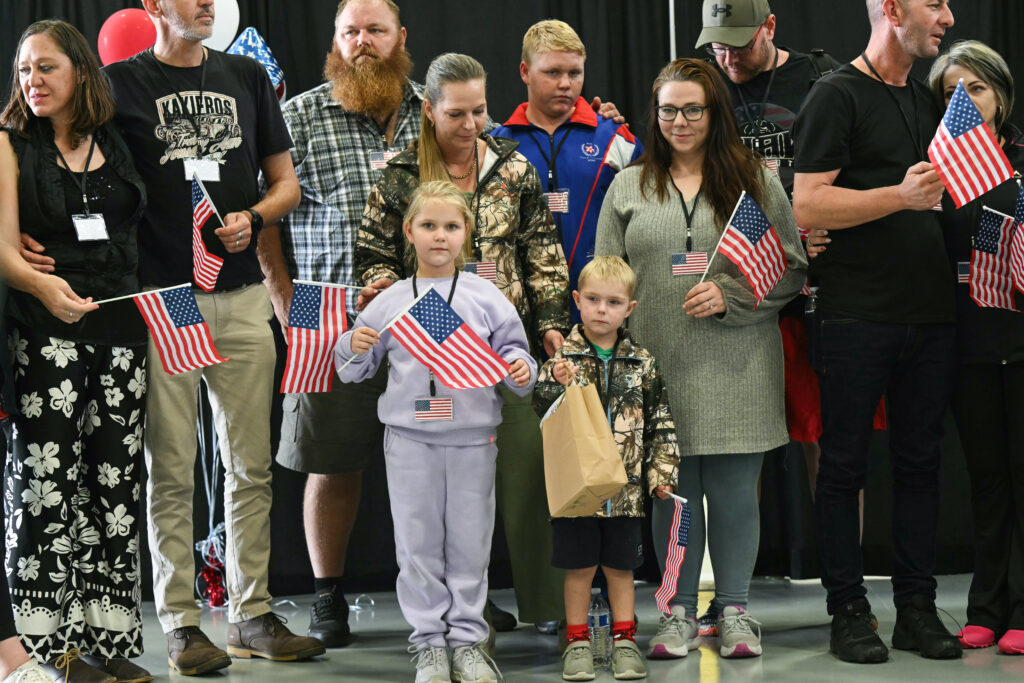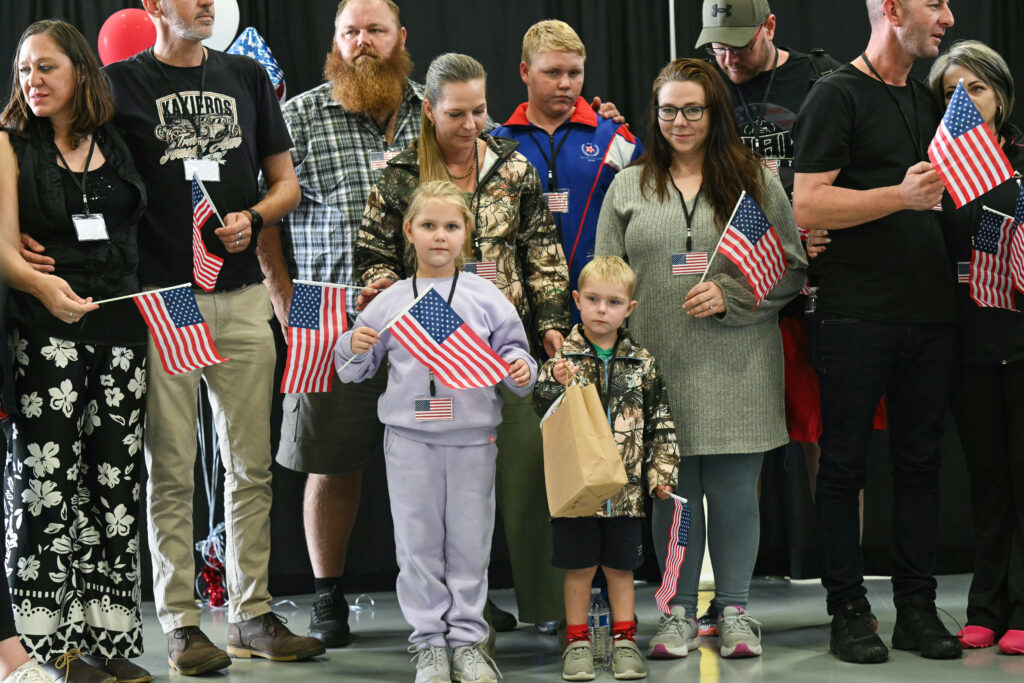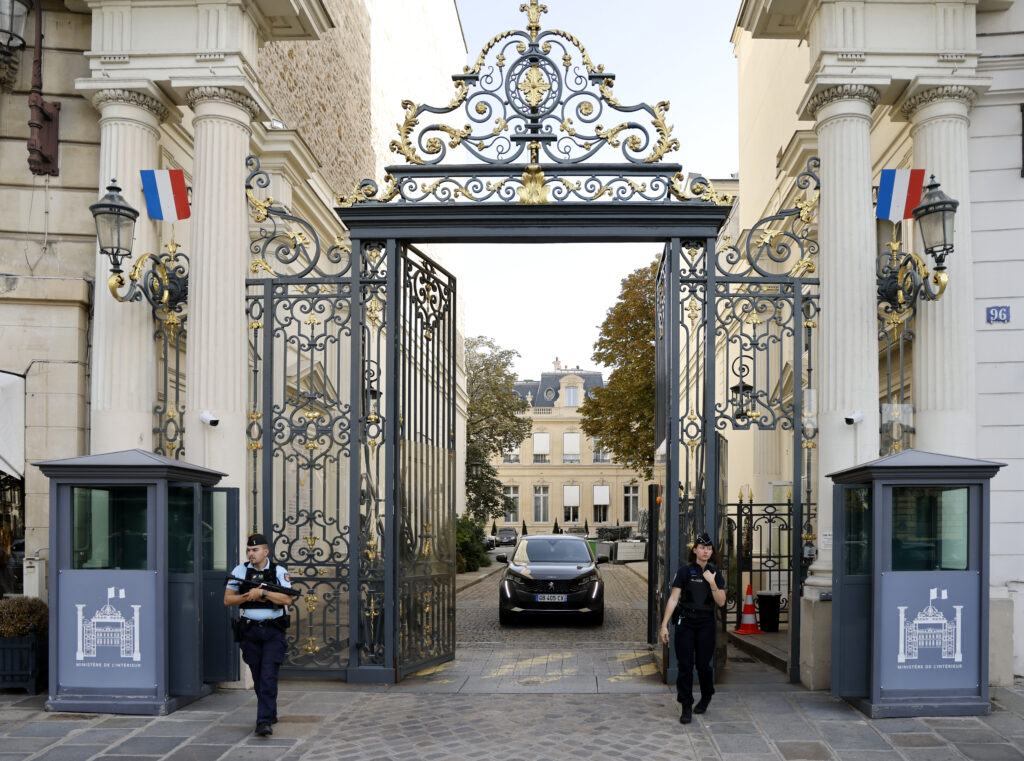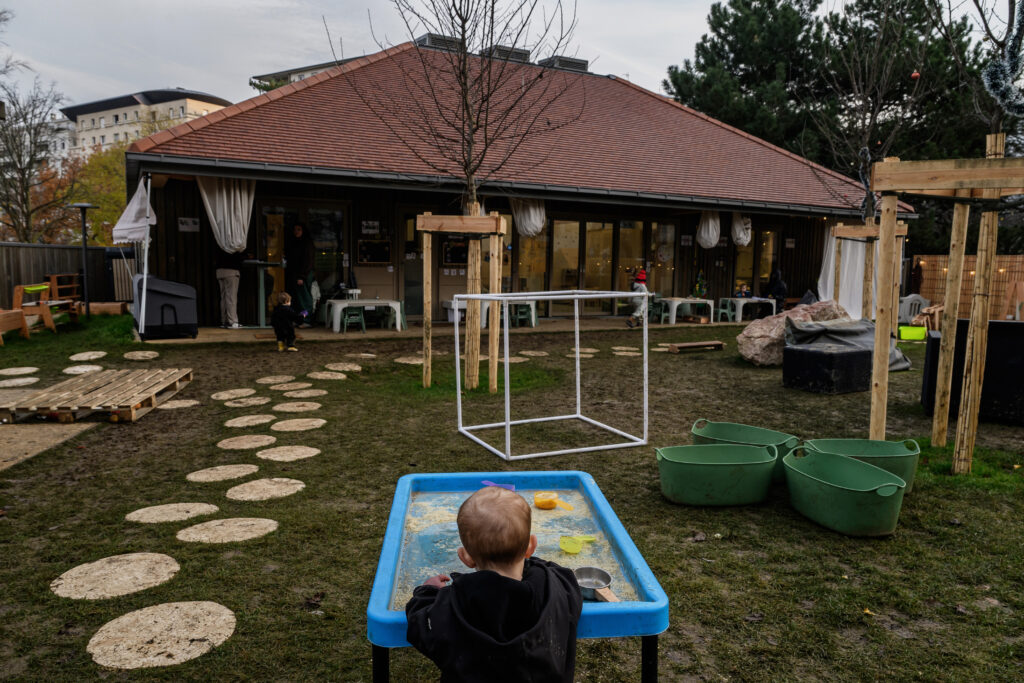Aux pieds des tours de la Part-Dieu, à Lyon, des enfants en bas âge emmitouflés dans des combinaisons de ski jouent dans la gadoue, encouragés par les éducatrices de leur crèche 100% en plein air. Ici, “tout se passe à l’extérieur: les repas, les siestes, les activités, les temps d’accueil, les temps plus calmes”, explique la directrice de la crèche “Souris en Herbe”, Ophélie Loeb, à laquelle semblent toujours fermement agrippés un ou deux petits. En ce jour de décembre, une vingtaine d’enfants de 15 mois à trois ans, tous équipés des mêmes combinaisons, caracolent entre ateliers de bricolage, circuit en rondins et rochers, ou s’affairent à la dinette dans la cour de 285 m2 entre des arbres récemment plantés.”La semaine dernière, on a eu beaucoup de pluie, c’était +gadoue land+. Les enfants étaient super contents, ils sautaient dans les flaques, c’était très marrant”, s’enthousiasme Amel Marif, l’une des neuf professionnelles qui y travaillent. A rebours des usages dans la plupart des autres garderies, bien chauffées l’hiver et à l’affut du moindre microbe, cet établissement associatif, soutenue par la municipalité écologiste, a ouvert début novembre, en pleine vague de froid.Inspiré par un modèle qui a fait ses preuves dans les pays scandinaves, il mise sur les bienfaits reconnus du plein air sur “le développement cognitif, moteur et émotionnel des enfants”, selon ses promoteurs.Encore embryonnaire en France, le concept a déjà été testé dans des crèches en semi plein air, avec parfois 80% du temps dehors, plus rarement la journée entière, mais est le premier à organiser les siestes en extérieur.”On a quand même un bâtiment qui nous permet de se replier en cas de météo extrême”, c’est-à-dire si le vent est trop fort ou si les températures dépassent -5° ou 35°C, précise la directrice, psychomotricienne de formation.- “Santé psychique” -Les espaces intérieurs comportent la salle de change et de soins, les locaux du personnel, une petite cuisine pour réchauffer les plats des enfants et un espace de repli ponctuel.Après quelques semaines d’ouverture, les parents rencontrés par l’équipe de l’AFP notaient déjà une amélioration de la santé et du sommeil de leur enfant. Aloïs, deux ans et demi, “a besoin de se dépenser beaucoup, c’est un petit garçon assez actif”, raconte Aurore, sa mère, en enlevant son casque de vélo. “Le fait d’être dehors, de pouvoir prendre l’air, c’est vraiment super, on vit en appartement donc on a pas l’occasion d’avoir un jardin à nous”.Un tiers des places sont réservées pour des enfants présentant des besoins spécifiques, notamment des enfants atteints de troubles du spectre de l’autisme, trisomie, retards de développement ou déficiences sensorielles. Le petit Mohammed a des retards de language et selon son père, le contact avec les autres est déjà devenu un petit peu plus facile. “Quand il rentre, on voit qu’il ne cherche plus le iPad, mais qu’il veut faire des activités avec ses mains”, dit Farid Seghieri. “Avant il était toujours enfermé, toujours malade. Et quand il y en a un qui est malade tout le monde à la maison tombe malade”, poursuit-il. Depuis qu’il passe la journée dehors, son fils “dort comme un grand”, note-t-il encore.Caroline Meynier, auxiliaire puéricultrice depuis plus de dix ans, assure elle aussi que ses journées sont “bien différentes”. “Le fait de ne pas être enfermées entre quatre murs, ça permet vraiment de projeter le regard plus loin. Du coup (…) on est beaucoup moins fatiguées le soir au niveau de la santé psychique”, dit-elle.Le maire écologiste Grégory Doucet, qui a accompagné le développement de cette crèche, souhaite désormais ouvrir, au printemps, la première crèche municipale de France 100% en plein air.









